
EASTERN MEDITERRANEAN • NOVEMBER 10th – 20th, 2013
CLASSICAL DION
Nov. 11 (Volos) ($199 pp incl. lunch)
If you have not seen Meteora, love ancient churches and geologic splendor, by all means make the pilgrimage up 195 steps to see Moni Varlaam, and then the relatively easier-to-access Moni Aghiou Stefanou. Holland America Line will offer a day trip to this UNESCO World Heritage site.
If you are in a more classical mood, visit Ancient Dion with us, a sanctuary to Zeus at the foot of 9,570 ft. Mount Olympus’ 52 peaks. Dion was the religious center of ancient Macedon. Alexander the Great, a native Macedonian, assembled armies for his initial and Balkan campaigns in Dion, and returned victorious to make offerings at the sanctuary of Olympian Zeus. We’ll visit the archaeological site and its museum, and have a Greek lunch at a local Aegean restaurant. Join us in a sojourn in a land where sacred and secular power met.
SENSORY ISTANBUL
Nov. 12 ($79 pp)
Ease into Istanbul. Come along and troll the corridors of the Spice Bazaar (aka Egyptian Bazaar) in the Fatih district. It’s prime local people watching, and you can peruse the sweets, spices and nuts. (A little hazelnut-pomegranate Turkish delight, perhaps?) We’ll escape from the bustle and take an evening Bosphorus cruise, passing palaces, luxury hotels, and Istanbul’s landmark yali and arrive at m.s. Rotterdam in time for dinner.
ISTANBUL’S ESSENCE
Nov. 13 ($199 incl. lunch)
Istanbul is impossible to describe, and has mesmerized travelers for millennia. Layered, amalgamated, flowing. Ancient and modern, secular and sacred. Plunge into Istanbul’s cultural whirlwind with our expert staff, who have been there, done that. On your itinerary: Hagia Sophia. It was the largest cathedral in the world for a thousand years, then a mosque, now a secular museum (so Istanbul). The Blue Mosque is defined by its 20,000 Iznik tiles. We’ll take in the vista of the Hippodrome, one of Istanbul’s oldest and most history-laden spots.
Onward to our learning lab in Turkish hospitality doing lunch at the Karakol Restaurant in Topkapi Palace’s former guard-house. Then we’ll immerse ourselves in the context and treasures of Topkapi, including the Treasury, Harem and Holy Relics sections. Once we’ve achieved total sensory overload, we’ll return to our ship.
ACROPOLIS OF PERGAMON
Nov. 14 (Dikili) ($99 incl. lunch pp)
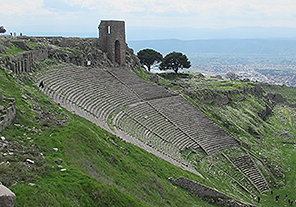
Bring your imagination and sturdy shoes and join us on a visit to the acropolis of Pergamon, an archaeological gem. At its height in the Hellenistic world, Pergamon housed one of the most important ancient libraries and parchment was developed here. Up on the acropolis, a cable car ride above town, we’ll visit the Trajaneum, the amazing architecture supporting the upper agora (see here), the base of the Great Altar of Pergamon (which is at Berlin’s Pergamon Museum), and the Pergamon Acropolis Theater (click image above for a larger picture), steepest in the ancient world. Pergamon is a memorable experience, and the vistas are breathtaking. On the other hand, most paths are steep, rubble strewn, and have no hand rails. If you have any walking issues (bad knees, balance issues, use “hiking poles”, canes, or any mobility aid) this is not the excursion for you.
At the foot of the Pergamon acropolis, we will see the ancient healing sanctuary of Asclepius with its Roman-era theater, the sacred spring, and the underground passageways of the site.
EPHESUS & PRIENE
Nov. 15 ($199 pp incl. lunch)
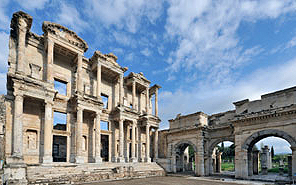
Spend a memorable morning at Ephesus where many civilizations have left their mark. It has a complex and many splendored history, often oversimplified. You’ll meander the Marble Road, visit the legendary latrines, check out the Library of Celsus, visit the political and commercial centers of the city, and see Ephesus’ lovely theater. A visit to the Terrace Houses will enliven your picture of Roman-era Ephesus. We will have lunch in the Ephesus vicinity. After lunch it’s off to Priene. Add a 21st century layer to the palimpsest of a theater at Priene, Turkey. We have the incomparable opportunity to absorb a special reading by Miriam Laube and follow it with a brief interactive performing experience within the fourth-century B. C. Greek theater of Priene. This ancient Ionian city has one of the finest existing examples of a Hellenistic theater and we have the rare privilege of evoking the roots of theater in its native place. The Shakespeare at Sea actors will be joining us on this excursion.
BLUE VOYAGE
Nov. 16 (Marmaris) ($189 pp incl. lunch)
Have a languid day on a traditional Turkish gulet. Sail from cove to cove in clear, blue green waters where the Aegean meets the Mediterranean. Call it the Turkish Riviera or the Turquoise Coast, the lush, pine-clad hills, streams, and fine sand beaches of the Marmaris area have attracted pleasure cruisers for thousands of years. We may sail past the cove in whose waters Mark Antony and Cleopatra are said to have swum. We’ll have a Turkish lunch onboard and simply live in the moment.
ATHENS
Nov. 20 (post-cruise) ($129 pp)
The Parthenon and its Acropolis setting are stunning, no doubt about it. They don’t require interpretation, and compose the perfect DIY Athens excursion. On the other hand, visiting the new Acropolis Museum and the National Archaeological Museum with a skilled guide who’s on your wavelength adds immeasurably to the experience. We suggest you join Shakespeare at Sea on a focused trip. You’ll see the Parthenon frieze, exquisite sanctuary relics, and Archaic sculpture at the Acropolis Museum. (This excursion starts at the cruise pier and ends at our post-cruise hotel, the Metropolitan. This excursion will be visiting two museums: the Acropolis Museum [pictured below], at the base of the Acropolis, and the National Archaeological Museum. We will not be visiting the Acropolis itself.)
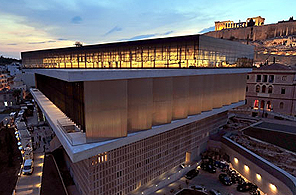
Click a Tab for Shore/Port Information and Excursions
![]() PIRAEUS (ATHENS), GREECE — Sunday, November 10 & Wednesday, November 20
PIRAEUS (ATHENS), GREECE — Sunday, November 10 & Wednesday, November 20
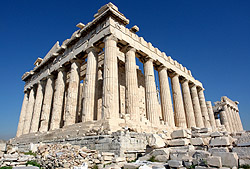 The cradle of Greek civilization, Athens today is a bustling, frenetic, modern city with six million inhabitants, one third of the total population of Greece. The port of Athens, Piraeus, is very much an integral part of the city.
The cradle of Greek civilization, Athens today is a bustling, frenetic, modern city with six million inhabitants, one third of the total population of Greece. The port of Athens, Piraeus, is very much an integral part of the city.
Although Athens is a huge, sprawling city, much of its political, historical and administrative life is concentrated in a small area including Syntagma (Constitution) Square, the Acropolis and Omonia Square.
According to Greek mythology, the establishment of Athens was the result of a dispute between the goddess of wisdom Athena and her fellow gods, under which the city was given as a peace offering. In historical terms, the city was founded by the Phoenicians at least 2,000 years before Christ. The founding fathers of democracy, Athenians had many times to go into battle to defend their freedom and built up a mighty military strength.
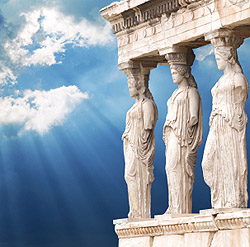 As the leading cultural influence in the Mediterranean region for centuries, Athens attracted considerable opposition as well as admiration. Its intellectual dominance over the Mediterranean began to wane with the establishment of the Byzantine Empire, eventually leading to the city being virtually deserted and almost destroyed by Saracens in the 12th Century. By the time the Turks gained control of Athens in the 15th Century, its population had dwindled to only a few thousand inhabitants. Between 400BC and 1400AD Athens had been raided, sacked, and burnt at least 30 times.
As the leading cultural influence in the Mediterranean region for centuries, Athens attracted considerable opposition as well as admiration. Its intellectual dominance over the Mediterranean began to wane with the establishment of the Byzantine Empire, eventually leading to the city being virtually deserted and almost destroyed by Saracens in the 12th Century. By the time the Turks gained control of Athens in the 15th Century, its population had dwindled to only a few thousand inhabitants. Between 400BC and 1400AD Athens had been raided, sacked, and burnt at least 30 times.
Gradually Athens was rebuilt and by the end of the 19th Century its fortunes had greatly improved, culminating in the revival of the Olympic Games in 1896. The next period of sustained development came after World War II with aggressive industrialisation and maritime enterprise.
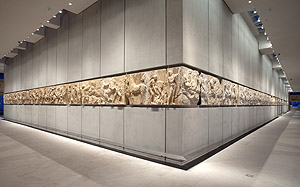 The historical attractions of Athens are world-renowned. The Acropolis, overlooking the city of Athens from the top of a rocky hillside, is the dominant monument of ancient Greece, the site of the first temple dedicated to the goddess Athena and the stunning Parthenon. Among the magnificent ruins of the Acropolis, and the fascinating artefacts of the Acropolis Museum, the ancient civilisation surrounding the Parthenon, Herod Atticaus Odeon, Dionysus Theatre, Muses Hill, the Agora, Hephaestus Temple and the Apostles Church come to life. In addition to its magnificent ancient monuments, Athens has much to offer the visitor, including colourful street markets and shops. Plus, of course, delicious Greek food such as the speciality meze and desserts including baklava.
The historical attractions of Athens are world-renowned. The Acropolis, overlooking the city of Athens from the top of a rocky hillside, is the dominant monument of ancient Greece, the site of the first temple dedicated to the goddess Athena and the stunning Parthenon. Among the magnificent ruins of the Acropolis, and the fascinating artefacts of the Acropolis Museum, the ancient civilisation surrounding the Parthenon, Herod Atticaus Odeon, Dionysus Theatre, Muses Hill, the Agora, Hephaestus Temple and the Apostles Church come to life. In addition to its magnificent ancient monuments, Athens has much to offer the visitor, including colourful street markets and shops. Plus, of course, delicious Greek food such as the speciality meze and desserts including baklava.
Not far from Athens is one of greatest engineering feats of mankind, the Corinth Canal. The canal, which is cut out of solid rock, is a little over 6km in length, 21 metres wide and some 79 metres high, with a water depth of eight metres. Such was the complexity of its construction that the canal was started by Nero in 66AD but only completed in 1893.
»» Holland America’s Athens Excursion Details »»
Shakespeare at Sea has an exclusive excursion in Athens on November 20:
(see ATHENS, bottom left)
![]() VOLOS, GREECE — Monday, November 11
VOLOS, GREECE — Monday, November 11
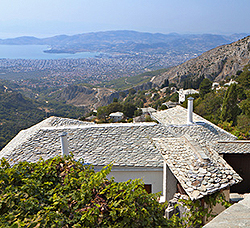 Volos is one of the largest and most attractive cities in Greece as well as one of the country’s most prominent ports. The modern-day city, built near the site of ancient Iolcos, dominates the region of Magnesia from its position at the foot of Mount Pelion (satellite image) overlooking the Pagasetic Gulf. This is one of the most beautiful areas in Thessaly, in the centre of Greece combining the allure of the sea with the mystical charm of the Centaurs’ mountain.
Volos is one of the largest and most attractive cities in Greece as well as one of the country’s most prominent ports. The modern-day city, built near the site of ancient Iolcos, dominates the region of Magnesia from its position at the foot of Mount Pelion (satellite image) overlooking the Pagasetic Gulf. This is one of the most beautiful areas in Thessaly, in the centre of Greece combining the allure of the sea with the mystical charm of the Centaurs’ mountain.
The area’s mythical background captivates the visitor’s imagination. Magnesia features in some of the most remarkable tales in Greek mythology. The progenitor of its peoples was Magnes, son of Zeus and Aeolus, yet Magnesia is believed to be the birthplace of a strange race, the Centaurs, beings which were part equine, part human, and originated from the union of Nephele and Ixion. Asclepius and Achilles were, among others, pupils of the Centaur Chiron. The famous Argonaut expedition, one of the greatest epics in the Greek mythological cycle, set sail from the Pagasetic Gulf.
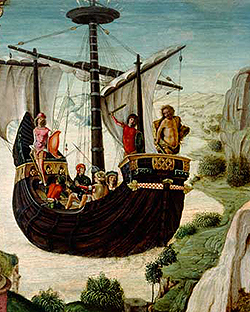 The wealth of the region and its long history have left their mark on the city’s architecture, which exudes confidence and grandeur. The numerous mansions, municipal halls, museums, early 20th-century industrial facilities, and splendid churches make touring Volos truly enjoyable.
The wealth of the region and its long history have left their mark on the city’s architecture, which exudes confidence and grandeur. The numerous mansions, municipal halls, museums, early 20th-century industrial facilities, and splendid churches make touring Volos truly enjoyable.
The sea creates a wonderful seafront with picturesque little restaurants, the famous tsipouradika, named after tsipouro, the traditional spirit of the area, which is perfect when combined with seafood teasers. Follow the paved Argonauts Avenue on the seafront and go all the way to the port on its western side, just as the locals love doing when in the mood for a romantic stroll with a stunning view to the open sea. Beyond doubt, this is the most impressive corner of the city, embellished not only by fishing boats and yachts, but also by an exact imitation of ancient ship Argo (pictured at right), constructed by faithfully following reports and ancient texts. The modern Argo, a brilliant feat of shipbuilding, will fill history lovers with excitement.
The city has a great labor and industrial history. Large European companies had their factories here in the 19th century. It was the centre of novelty and architectural innovation. This history has left its mark on the entire city in the form of splendid buildings. The refugee population from Asia Minor, which began to arrive from 1923 onwards, shaped the appearance of the city by creating the large district of Nea Ionia. The urban mansions in the city centre, towards the port and the railway station, and the working-class neighbourhoods in the environs, made up a very charming residential framework. The present-day city has spread out along the coast, incorporating old resorts, like Agria in the east and Soros in the west.
»» Holland America’s Volos Excursion Details »»
Shakespeare at Sea has an exclusive excursion in Volos:
(see CLASSICAL DION, top left)
![]() ISTANBUL, TURKEY — Tuesday & Wednesday, November 12 & 13
ISTANBUL, TURKEY — Tuesday & Wednesday, November 12 & 13
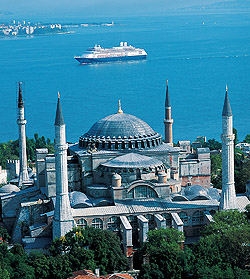 Byzantium, New Rome, Constantinople, Istanbul. Four cities, three empires, a history of over 3000 years of flourishing commerce between east and west. With Rome and Athens, Istanbul has written the most ancient and important history in the Mediterranean and signs of its power are evident in all monuments and remains.
Byzantium, New Rome, Constantinople, Istanbul. Four cities, three empires, a history of over 3000 years of flourishing commerce between east and west. With Rome and Athens, Istanbul has written the most ancient and important history in the Mediterranean and signs of its power are evident in all monuments and remains.
Presently Istanbul is a very modern city, with over six million inhabitants at the same time maintaining its traditions and a deep tie to its roots. The Greeks named it Byzantium, while to the Romans it was the east version of Rome as it was built on seven hills. The emperor Constantine, confronting with the greatness of the city, transformed it into the capital of the Eastern Roman Empire.
The city is divided in two, and is the only city in the world half built in Europe and half in Asia. The Galata Bridge, 1560-metres long joins the two parts and represents to the Turks both east and west and the meeting point of the old and the new. Museums, monuments, mosques, shops and picturesque bazaars, quiet parks, excellent hotels and very good restaurants and a busy night life guarantee entertainment, 24 hours a day.
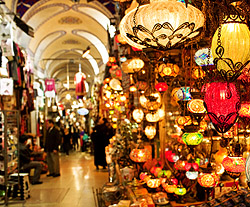 Saint Sophia Basilica, presently a museum, is an extraordinary example of architecture with marble, metal and precious stones decorating the walls and galleries. The Blue Mosque, (Sultanhamet Mosque) had been conceived to supersede the basilica in beauty. With 6 minarets and its domes, it is one of the most beautiful and popular Islamic religion centres in the world. The Hippodrome was for centuries the core of public life. Of the original structure we can presently admire Theodosius Obelisk, the Serpentine Column in bronze and the brick Obelisk. Topkapi museum is the most important in the city. It contains Turkish ceramics, arms, china, books, miniatures and the treasure with jewels of the emperor, besides the relics of Mohammed, the Islam prophet.
Saint Sophia Basilica, presently a museum, is an extraordinary example of architecture with marble, metal and precious stones decorating the walls and galleries. The Blue Mosque, (Sultanhamet Mosque) had been conceived to supersede the basilica in beauty. With 6 minarets and its domes, it is one of the most beautiful and popular Islamic religion centres in the world. The Hippodrome was for centuries the core of public life. Of the original structure we can presently admire Theodosius Obelisk, the Serpentine Column in bronze and the brick Obelisk. Topkapi museum is the most important in the city. It contains Turkish ceramics, arms, china, books, miniatures and the treasure with jewels of the emperor, besides the relics of Mohammed, the Islam prophet.
Turkish cuisine is undoubtedly worth mentioning. Specialities include the cerkez tavugu (Circassan chicken), and biber dolmasi (stewed peppers with filling). Cakes are excellent: hanim gobegi (woman belly), and dilber dudagi (lady mouth) are just two examples of a variety of delicious specialities.
Istanbul is particularly good for shopping, both in the ancient bazaar and in modern shops, for simple objects and for finely manufactured jewels. The Grand Bazaar, in the old city is beyond all doubts the commercial centre tourists prefer. Its small alleys and stalls present a variety of opportunities: jewels, carpets, particularly Anatolian is the most popular. Copper, onyx and leather objects are also finely handmade as well as typical teapots. (Copy provided courtesy of the Greek National Tourism Organization www.visitgreece.gr.)
»» Holland America’s Istanbul Excursion Details »»
Shakespeare at Sea has two exclusive excursions in Istanbul:
(see SENSORY ISTANBUL & ISTANBUL’S ESSENCE, at left)
![]() DIKILI, TURKEY — Thursday, November 14
DIKILI, TURKEY — Thursday, November 14
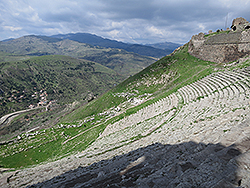 Dikili is a coastal town (4 miles from the Aegean Sea) and a district of Izmir Province in the Aegean Region of Turkey. The district is quite picturesque both along its shoreline and in its interior parts and is a popular summer resort. Dikili is a seaside fishing town that is made up of mainly holiday villas and a few hotels. The charming centre with cobbled streets has restaurants, bars and shops.
Dikili is a coastal town (4 miles from the Aegean Sea) and a district of Izmir Province in the Aegean Region of Turkey. The district is quite picturesque both along its shoreline and in its interior parts and is a popular summer resort. Dikili is a seaside fishing town that is made up of mainly holiday villas and a few hotels. The charming centre with cobbled streets has restaurants, bars and shops.
Both Turkish and foreign vacationers come to Dikili for its relative calm and quiet, broken now and then by the horn of a cruise ship disembarking hundreds of passengers on their way to visit the ruins of nearby Bergama (Pergamon). (Shakespeare at Sea is offering an excursion to Pergamon. The pictures on this page are all taken on the grounds of Pergamon.) (Click the image above for a larger view.)
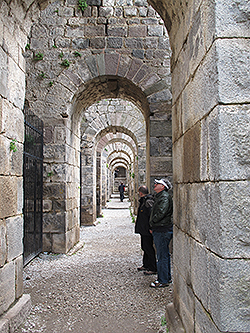 The whole area of the district abounds in places of natural beauty as well as spots of historical interest. There is a crater lake in Merdivenli village, and ancient caverns in Demirtas and Delitas villages as well as pine forests extending towards the Madra Stream. The area is also famous for its thermal springs, which are in Nebiler, Bademli, and Kocaoba villages. Furthermore, the beaches in Bademli and Denizkoy localities are important touristic attractions of the region.
The whole area of the district abounds in places of natural beauty as well as spots of historical interest. There is a crater lake in Merdivenli village, and ancient caverns in Demirtas and Delitas villages as well as pine forests extending towards the Madra Stream. The area is also famous for its thermal springs, which are in Nebiler, Bademli, and Kocaoba villages. Furthermore, the beaches in Bademli and Denizkoy localities are important touristic attractions of the region.
Another must see is the Merkez Mosque which is a rare example of a wooden construction dating from 1789. Its uniqueness lies in having been built without using any nails in the construction.
Dikili also has a rich history extending back to prehistory, and the ancient, and as yet unexplored, site of Atarneus is located nearby. The site is called “Atarna” locally.
A small islet within Dikili district (called Garip Adasi locally, with ancient sources also citing the name Argounissai) made international headlines in April 2007. The islet was offered for sale by its proprietors and The Guardian reported the Greek islanders of Lesbos raised money among themselves and bought the islet.
The scenery consists of mountains, olive groves, vineyards, and cotton fields. (Copy provided courtesy of WikiTravel.org.)
»» Holland America’s Dikili Excursion Details »»
Shakespeare at Sea has an exclusive excursion in Dikili:
(see ACROPOLIS OF PERGAMON, lower left left)
![]() KUSADASI (EPHESUS), TURKEY — Friday, November 15
KUSADASI (EPHESUS), TURKEY — Friday, November 15
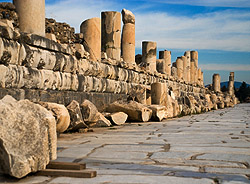 Kusadasi, which means “bird island,” is set in a superb gulf known for its sparkling water, broad sandy beaches, and large marina. The city has managed to retain a certain earthiness while doing a brisk trade in Turkish carpets and leather goods to visitors. The town’s old quarter is a picturesque maze of winding streets and houses adorned with flowers and birdcages. In the center stands a 17th-century caravanserai, now converted into a hotel. The resort is also gateway to important sites of archaeological and religious interest.
Kusadasi, which means “bird island,” is set in a superb gulf known for its sparkling water, broad sandy beaches, and large marina. The city has managed to retain a certain earthiness while doing a brisk trade in Turkish carpets and leather goods to visitors. The town’s old quarter is a picturesque maze of winding streets and houses adorned with flowers and birdcages. In the center stands a 17th-century caravanserai, now converted into a hotel. The resort is also gateway to important sites of archaeological and religious interest.
Ionian Greeks settled this part of Asia Minor as early as the 10th-century B.C. They founded cities around the finest natural harbors in the Mediterranean, and Kusadasi became an important commercial zone.
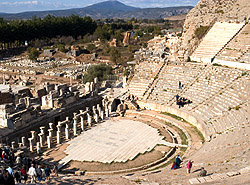 A visit to Ephesus will put you in touch with some of this area’s most stunning ancient ruins. There is an Odeon, or small theater, with a capacity of 1,400. It was also used for public meetings of the city council. The Magnesian Gate and Town Hall are near at hand.
A visit to Ephesus will put you in touch with some of this area’s most stunning ancient ruins. There is an Odeon, or small theater, with a capacity of 1,400. It was also used for public meetings of the city council. The Magnesian Gate and Town Hall are near at hand.
The impressive Library of Celsus stands at the foot of the main street. Its stately two level facade is being carefully restored. The interior walls were designed to display 12,000 scrolls in niches, which protected them from the humidity.
The Temples of Domitian and Hadrian are impressive, and the Great Theater (which is still in use) seats 25,000 spectators.
Harbor Street — also known as the Arcadian Way — connected the port district with the center of town. Beautiful colonnades on both sides and marble pavement made a dazzling first impression on visiting dignitaries. It was one of the rare ancient streets to be lit by lamps at night.
Some distance away, you can see the ruins of the massive Temple of Artemis, which was several times larger than the Parthenon. There had been temples here as early as the 7th century B.C.; this one was completed about 430.
Even in its abandoned state, Ephesus remains an awe-inspiring city, in an amazing setting. The Ionians lived well and wisely. Even those who live in great luxury today must tip their hats to these imaginative people.
»» Holland America’s Ephesus Excursion Details »»
Shakespeare at Sea has an exclusive excursion in Ephesus:
(see EPHESUS, on left)
![]() MARMARIS, TURKEY — Saturday, November 16
MARMARIS, TURKEY — Saturday, November 16
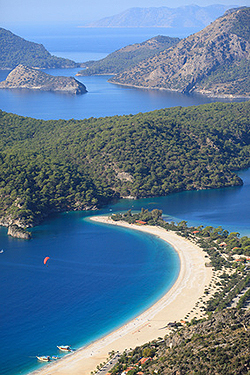 You might well imagine that Marmaris, with its characteristic fjords, is located in Norway. But in reality, it’s located in the heart of the Mediterranean. In ancient times it was known as “the place blessed by God,” and judging from the surrounding countryside, there’s no doubt this was the case.
You might well imagine that Marmaris, with its characteristic fjords, is located in Norway. But in reality, it’s located in the heart of the Mediterranean. In ancient times it was known as “the place blessed by God,” and judging from the surrounding countryside, there’s no doubt this was the case.
Located where the Aegean Sea meets the Mediterranean, it has a good climate and in winter this part of Turkey guarantees you mild and gentle conditions. Yet in the summer, there is always a welcome breeze. The history of Marmaris dates back to ancient times. Founded around 3400 B.C., its first inhabitants were known as “Caria”. The city was first recorded by the Greek historian Erodono, who described Marmaris as a “paradise of green pine and sweet perfumes.”
A Turkish sultan named Suliman the Magnificent established his base from which to launch his conquest of Rhodes. Suliman loved to say that the greatness of his empire began in Marmaris. Life has changed little in Marmaris since then. Life in the old town is centered around the small workshop. Here, the carpenters’ craftsmanship remains unchanged. These skilled professionals built exceptionally good quality boats using just simple carpenters’ tools, and this is probably why their craft still lives on here, while in other countries it is gradually disappearing.
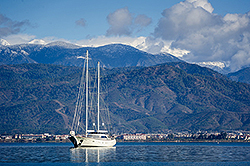 One of the most beautiful ports is Bozurun. According to legend, it was constructed at the orders of Suliman, who wanted to repair his fleet here. The ancient Roman port of Cnido is even older, a tourist centre not far from Marmaris. Since then, Marmaris has become a “calm retreat” for Turkish VIPs. Monarchs, emperors, kings, religious and political leaders have been coming here for centuries to relax and gently revive themselves.
One of the most beautiful ports is Bozurun. According to legend, it was constructed at the orders of Suliman, who wanted to repair his fleet here. The ancient Roman port of Cnido is even older, a tourist centre not far from Marmaris. Since then, Marmaris has become a “calm retreat” for Turkish VIPs. Monarchs, emperors, kings, religious and political leaders have been coming here for centuries to relax and gently revive themselves.
A popular tourist destination is the Castle. Before heading for Rhodes, Suliman the Magnificent ordered work to be carried out to enlarge it. When he returned, he was not satisfied with the work of his architects, Suliman then decided to further extend it according to a strict artistic concept, thus making the Castle one of the major architectural works of the whole Mediterranean. Inside, the Castle houses seven galleries as a sort of art museum containing important finds, as well as the private collection of Kenan Evren, the seventh Turkish President.
»» Holland America’s Marmaris Excursion Details »»
Shakespeare at Sea has an exclusive excursion in Marmaris:
(see BLUE VOYAGE, bottom left)
![]() ALANYA, TURKEY — Sunday, November 17
ALANYA, TURKEY — Sunday, November 17
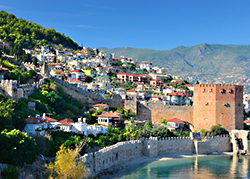 The cruise port of Alanya sits in a picturesque harbor on the Turkish Riviera, overlooked by Alanya’s spectacular medieval castle, which sits atop a rocky peninsula. This historic and thriving resort is an exciting cruise destination, rich in beauty and history, as well as the gateway to a landscape of long sandy beaches, idyllic coves, canyons, rivers and caves. The city boasts a rich culture, fascinating archaeology and warm hospitality. First settled in the Paleolithic Age, about 20,000 years ago, this charming city, according to legend, was a gift from Mark Anthony to Cleopatra.
The cruise port of Alanya sits in a picturesque harbor on the Turkish Riviera, overlooked by Alanya’s spectacular medieval castle, which sits atop a rocky peninsula. This historic and thriving resort is an exciting cruise destination, rich in beauty and history, as well as the gateway to a landscape of long sandy beaches, idyllic coves, canyons, rivers and caves. The city boasts a rich culture, fascinating archaeology and warm hospitality. First settled in the Paleolithic Age, about 20,000 years ago, this charming city, according to legend, was a gift from Mark Anthony to Cleopatra.
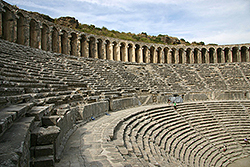 Insight Cruises recommends this Holland America excursion: “Founded on a hilltop near the Eurymedon River, Aspendos was a major port city during the rule of the Roman Empire. To date, only the Roman theatre (built in the 2nd century AD) has been excavated — however, it is considered to be the best-preserved example in the entire Mediterranean. A scenic drive then leads you to nearby Side, a seaside village where Mark Antony and Cleopatra once visited during their romantic saga. You’ll walk through the broad, colonnaded streets lined with ancient buildings to a central marketplace, where pirates once unloaded and sold their cargo. Passing through the market, admire Side’s 15,000-seat arena, also built in the 2nd century AD. Legendary gladiator matches took place here in Roman times, but it was converted into an open-air church in the 5th century. Three temples lie on the fringe of the theater — one to Dionysus, the god of wine, and two others dedicated to Apollo and Artemis. Side’s Golden Age took place between the 2nd and 4th centuries AD, when the city prospered due to its good relations with the Roman Empire. Earthquakes, Crusaders, and Arab raiders all took their toll on the city and it was completely abandoned by the 10th century. It was swiftly buried by the sands of time. Recently, Side has enjoyed a remarkable resurrection, and is now home to an eclectic but charming blend of ancient ruins and modern beachside hotels, cafes, and nightclubs.”
Insight Cruises recommends this Holland America excursion: “Founded on a hilltop near the Eurymedon River, Aspendos was a major port city during the rule of the Roman Empire. To date, only the Roman theatre (built in the 2nd century AD) has been excavated — however, it is considered to be the best-preserved example in the entire Mediterranean. A scenic drive then leads you to nearby Side, a seaside village where Mark Antony and Cleopatra once visited during their romantic saga. You’ll walk through the broad, colonnaded streets lined with ancient buildings to a central marketplace, where pirates once unloaded and sold their cargo. Passing through the market, admire Side’s 15,000-seat arena, also built in the 2nd century AD. Legendary gladiator matches took place here in Roman times, but it was converted into an open-air church in the 5th century. Three temples lie on the fringe of the theater — one to Dionysus, the god of wine, and two others dedicated to Apollo and Artemis. Side’s Golden Age took place between the 2nd and 4th centuries AD, when the city prospered due to its good relations with the Roman Empire. Earthquakes, Crusaders, and Arab raiders all took their toll on the city and it was completely abandoned by the 10th century. It was swiftly buried by the sands of time. Recently, Side has enjoyed a remarkable resurrection, and is now home to an eclectic but charming blend of ancient ruins and modern beachside hotels, cafes, and nightclubs.”
![]() LIMASSOL, CYPRESS — Monday, November 18
LIMASSOL, CYPRESS — Monday, November 18
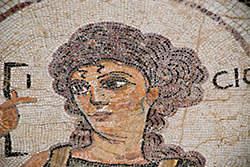 Cyprus has two souls. The former extremely practical, determined perhaps by the early industrial origins of the island and by the name deriving from the Latin “cuprum” (copper). In fact, mines in the southern part of the island are rich with copper, still extracted today and manufactured in the artistic Cypriot way. Also asbestos and chrome. The second soul derives from Greek tradition and is characterised by romanticism for those who want to realise their love dreams here. In fact it was in Cyprus, not far from Limassol, that Aphrodite was apparently born. Venus to the Romans, the love goddess, generated by the foam of the sea and exquisitely drawn by Botticelli while lying on a shell.
Cyprus has two souls. The former extremely practical, determined perhaps by the early industrial origins of the island and by the name deriving from the Latin “cuprum” (copper). In fact, mines in the southern part of the island are rich with copper, still extracted today and manufactured in the artistic Cypriot way. Also asbestos and chrome. The second soul derives from Greek tradition and is characterised by romanticism for those who want to realise their love dreams here. In fact it was in Cyprus, not far from Limassol, that Aphrodite was apparently born. Venus to the Romans, the love goddess, generated by the foam of the sea and exquisitely drawn by Botticelli while lying on a shell.
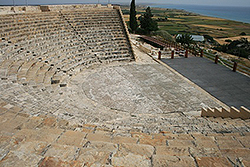 Perhaps for this reason one of the most important weddings in history was celebrated in Limassol. The one between Richard the Lion Heart and Berengary of Navarra who was crowned Queen in the castle of the city, thousands kilometres of from London. The island also has two geographic souls: rugged mountain chains with the Troodhos volcano, largely exploited from the industrial point of view, while inland small villages dot the valleys entirely devoted to farming. In particular cereals, citrus and grapes, producing a vintage wine. Similarly, two cultures influenced the island: the Greek culture, full of traditions and social organisation and the Turkish influence, whose coast is just 70 miles away.
Perhaps for this reason one of the most important weddings in history was celebrated in Limassol. The one between Richard the Lion Heart and Berengary of Navarra who was crowned Queen in the castle of the city, thousands kilometres of from London. The island also has two geographic souls: rugged mountain chains with the Troodhos volcano, largely exploited from the industrial point of view, while inland small villages dot the valleys entirely devoted to farming. In particular cereals, citrus and grapes, producing a vintage wine. Similarly, two cultures influenced the island: the Greek culture, full of traditions and social organisation and the Turkish influence, whose coast is just 70 miles away.
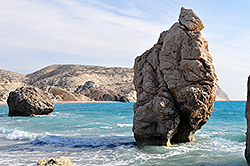 (At right, rock formation known as Aphrodite’s rock. Said to be the place where Aphrodite rose from the sea following her birth.) Limassol’s most important development started in the Middle Ages, a time characterised by dramatic events. A terrible flood was followed by a long siege of the Genoese and subsequently by the hordes of Barbarians and Arabs. After a further attack in 1570 by the Turk Lala Mustafa, there was a period of crisis and conflict which lasted until last century when the city became a commercial and industrial centre and the second largest and most important city in Cyprus. Cyprus offers many seaside attractions as well as archaeological ones. In this connection, the Curium and Colossi excavations are undoubtedly important with the baths and mosaics almost entirely uncovered. Cyprus has been eternally tied to Aphrodite’s legend.
(At right, rock formation known as Aphrodite’s rock. Said to be the place where Aphrodite rose from the sea following her birth.) Limassol’s most important development started in the Middle Ages, a time characterised by dramatic events. A terrible flood was followed by a long siege of the Genoese and subsequently by the hordes of Barbarians and Arabs. After a further attack in 1570 by the Turk Lala Mustafa, there was a period of crisis and conflict which lasted until last century when the city became a commercial and industrial centre and the second largest and most important city in Cyprus. Cyprus offers many seaside attractions as well as archaeological ones. In this connection, the Curium and Colossi excavations are undoubtedly important with the baths and mosaics almost entirely uncovered. Cyprus has been eternally tied to Aphrodite’s legend.
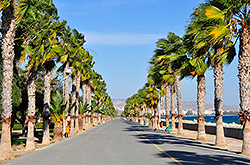 However, according to the legend, another god had elected its residence in Cyprus, Dionysius, Bacchus to the Romans, whose home is situated in Paphos which is certainly one of the most beautiful parts of the southern coast of the island. As far as shopping is concerned, silver, gold and bronze are good buys and their manufacture is one of the most ancient traditions in Cyprus.
However, according to the legend, another god had elected its residence in Cyprus, Dionysius, Bacchus to the Romans, whose home is situated in Paphos which is certainly one of the most beautiful parts of the southern coast of the island. As far as shopping is concerned, silver, gold and bronze are good buys and their manufacture is one of the most ancient traditions in Cyprus.
Theatre History Condensed
Join Dr. Lue Douthit for a cruise-long course in the classics. Who were the actors? Who wrote the first plays? When and where did many (or most) of our theatre traditions start? This six-class series runs throughout the cruise with each lecture helping to create a broader understanding of the art.
2014 Season In Depth
Executive Director Cynthia Rider and Director of Literary Development and Dramaturgy Dr. Lue Douthit will walk you through the upcoming season with details and insights about all of the productions. These insights will enrich your season and you will be able to dazzle your friends with your knowledge!
The Boarshead
What is this? What does the Boarshead mean? Who serves on this committee? How did it start? What is discussed in Boarshead? How many plays do you read? This session will help inform your choices when you get to build your own season!
Build Your Ideal Season
It’s your turn to create a season to delight fellow theatre goers. You will receive the template for an OSF rep season and choose the shows to be presented. Our panel of experts will evaluate your season and we’ll all learn about the art and science of composing a theatre season. We will provide you an overview of the rules and then turn you loose — either as teams or individuals, to prepare your season.
From Anarchy to Adaptation
The evolution from playing a character to inhabiting a persona to taking on the challenge of adapting a work by said character. A conversation with Mark Bedard about the Marx Brothers, Anarchy, how much is Mark and how much is Groucho in the upcoming production of The Cocoanuts.
You Say You Love Me, Now Prove it!
So many of Shakespeare’s lovers have a moment when they ask for proof of love and fidelity. A token is exchanged and a vow is made only to be tested later on. Enjoy these famous passages from some of his best known works and more insight into the ‘lover’s test’. Featuring Miriam, Rex, Mark and Emily with commentary by Dr. Lue Douthit.
The High Cost of Humor
The history of humor overview and what makes something funny. Is it the pratfall? The patter? The dilemma? The misunderstandings? The difference between stand-up and sitcoms. The way humor has evolved over the years. A little bit risqué, completely ribald and rollicking — or is that just Rex? Join us for this, our most dramatic session about the serious business of being funny. Featuring Rex Young and Mark Bedard.
An Illiad
Rex Young will share the story of heart ache and heartbreak in this retelling of an epic journey. This one man tour de force tells the tale of war and loss on a deeply personal level. The poet’s wish in conjuring these legends one more time is that we will finally find the peace we seek. Featuring Rex Young, directed by Miriam Laube.
Greek Choral Reading
This is our time travel moment — a step back in time to the ruins of an ancient theatre in Priene. Miriam will coach everyone through a short reading of a classic piece for us to share at the theatre ruins in Priene. (One session on the ship and then onsite.) Featuring Miriam Laube.
Character Counts
How do you create a character from the text alone? What other resources do actors and directors draw from to build these stories and breathe life into what seems intangible and two dimensional at first. This session will give you an inside look into the actor’s and director’s process. Featuring Miriam Laube and Emily Sophia Knapp.
Say it with Song
Miriam, Emily and Mark will share a selection of songs from OSF productions past and maybe a hint of what is in the future. A few love songs, some heartwrenching ballads, a silly song or two and many of your favorites are sure to be included this evening.
The Tempest
Work through the text with our acting company and then join us for a reader’s theatre rendition of Shakespeare’s tale of love, loss, redemption and adventure. Featuring: YOU!
Quiz Series
How well do you know your theatre history? Your OSF history? Your Ashland Trivia knowledge? Do you know more about Broadway or the Bardway? These brainy battles will keep everyone on their toes. The winners of the Shakespeare at Sea III series will not only get bragging rights — you will also have a private set change with Thomas Curtis, champagne and strawberries with Cynthia Rider before an opening night performance of the 2014 season and a personal backstage tour with Kimberley Jean Barry. Quiz masters: Becky Ross and Doreen O’Skea.
Program subject to change.
Mark Bedard, Actor
Lue Morgan Douthit, Ph.D., Dramaturgy
Emily Knapp, Actor
Miriam A. Laube, Actor
Cynthia Rider, Executive Director
Rex Young, Actor
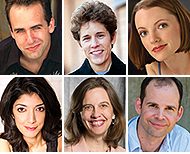
Speakers have confirmed their intent to participate; however, scheduling conflicts may arise.
Cruise prices vary from $1,139 for an Interior Stateroom to $3,199 for a Neptune Suite, per person. For those attending our PROGRAM, there is a $1,575 fee. For detailed information and pictures of our ship and the cabins, please visit CABIN & SHIP INFO page. Additional per-person fees include government taxes and fees ($299) and gratuities ($11.50 per day). All prices and fees are detailed on the BOOK NOW page.
For a detailed listing of the cruise itinerary please review our ITINERARY page.
Use our PRICING CALCULATOR for a quick price quote! For questions, please don’t hestitate in calling InsightCruises.com (650-787-5665) or emailing us.
|
Never cruised with Holland America? Watch this and read this! |
||
Download the ms Rotterdam 2-page deckplan |
||
View the ship’s cabins and deckplan interactively |
||
Other virtual tours and videos of the ms Rotterdam |
||
264 S. Meridith Ave., Pasadena, CA 91106 • 650-787-5665 • Copyright 2013 © Insight Cruises